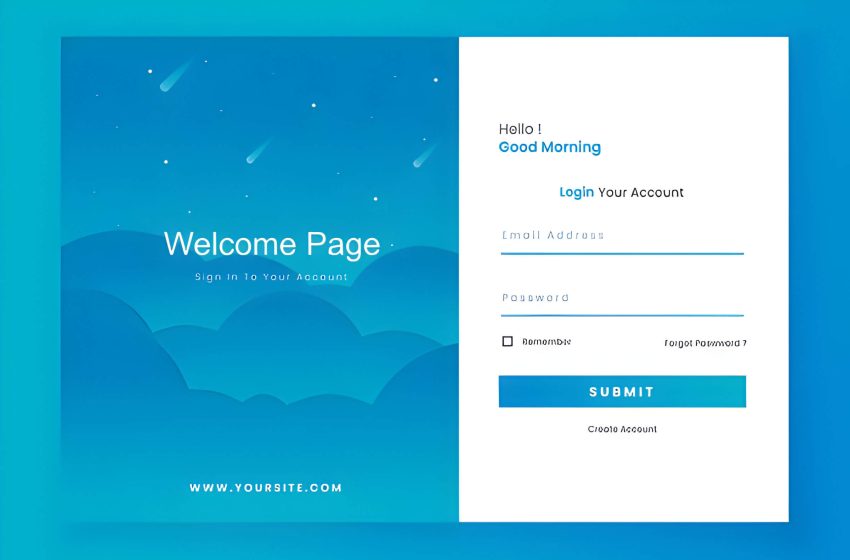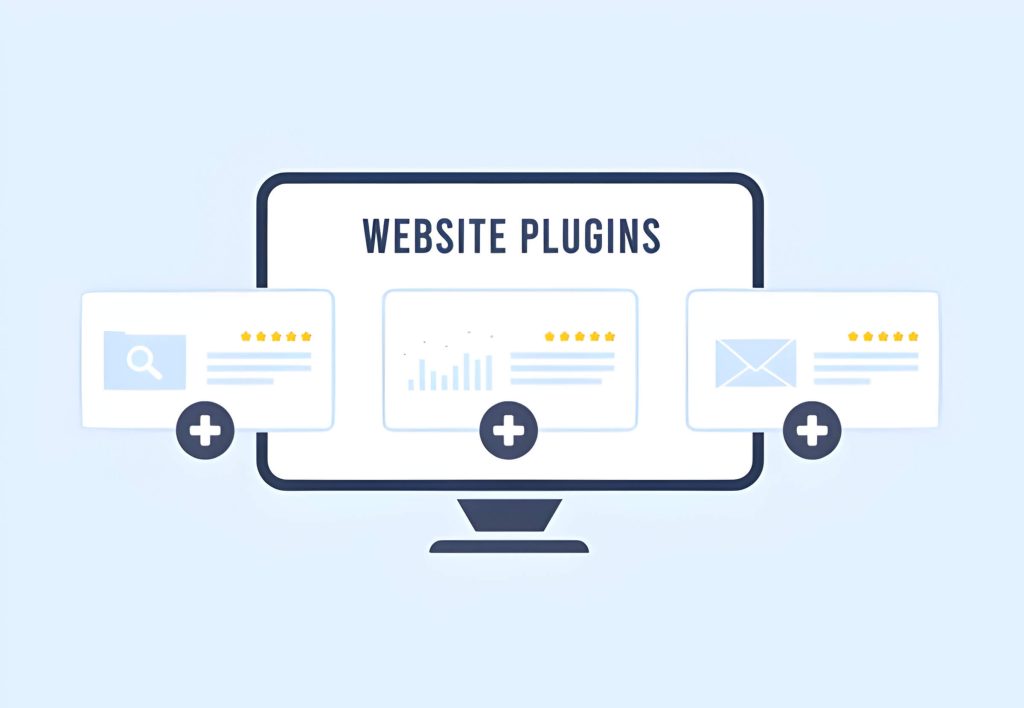How to Use Contact Forms on Your Website

Effective communication is the cornerstone of any successful website, and contact forms play a pivotal role in facilitating this interaction.
These essential tools bridge the gap between website owners and their visitors, offering a direct line of communication that can boost user engagement and lead generation. From choosing the right plugin to implementing best practices in design and placement, creating an effective contact form requires careful consideration of various elements.
This article explores the key aspects of contact forms, including their importance, implementation strategies, and optimization techniques, to help website owners harness their full potential in enhancing user experience and achieving business goals.
Understanding the Importance of Contact Forms
Contact forms serve as a vital communication bridge between websites and their visitors, playing a crucial role in customer engagement and lead generation. These interactive elements provide a streamlined method for users to reach out, make inquiries, or request information, enhancing overall user interaction. By implementing well-designed contact forms, businesses can efficiently collect valuable data from potential customers, facilitating personalized follow-ups and nurturing relationships.
Moreover, contact forms act as a 24/7 communication channel, allowing visitors to submit their queries at any time, even outside of business hours. This accessibility can significantly improve customer satisfaction and increase the likelihood of converting casual browsers into leads. Additionally, contact forms help filter and organize incoming messages, making it easier for businesses to prioritize and respond to inquiries promptly.
From a technical standpoint, contact forms also offer advantages in terms of spam reduction and data security. Unlike publicly displayed email addresses, contact forms can incorporate CAPTCHA or other verification methods to deter automated spam submissions. Furthermore, they can be configured to encrypt sensitive information, ensuring the protection of user data during transmission.
Key Elements of an Effective Contact Form
An effective contact form is a crucial element of any website, serving as a direct line of communication between visitors and the organization. To create a contact form that encourages user engagement and delivers valuable information, consider these key elements:
1. Essential form fields: Include only the necessary fields such as name, email address, and message. Avoid overwhelming users with too many questions.
2. Input validation: Implement real-time validation to ensure users enter correct information, reducing errors and frustration.
3. User-friendly design: Create a clean, intuitive layout with clear labels and ample spacing between fields for easy navigation.
4. Responsive layout: Ensure your contact form adapts seamlessly to various screen sizes and devices, providing a consistent experience for all users.
5. Submission confirmation: Provide immediate feedback upon form submission, reassuring users that their message has been received.
6. Clear call-to-action: Use a prominent, descriptive submit button that stands out from the rest of the form.
7. Privacy statement: Include a brief privacy policy or link to alleviate concerns about data protection.
By incorporating these elements, you can create a contact form that not only looks professional but also encourages user interaction and improves communication with your audience.
Choosing the Right Contact Form Plugin for Your Website

When selecting a contact form plugin for your website, it’s essential to consider several factors to ensure you choose the right solution for your needs. Start by evaluating the plugin’s ease of use and customization options. Look for form builders that offer drag-and-drop functionality and a variety of pre-built templates to streamline the creation process.
Integration capabilities are crucial for seamless data management. Ensure the plugin can connect with your preferred email marketing tools, CRM systems, or other essential platforms. This integration will help you efficiently manage and utilize the information collected through your forms.
Security should be a top priority when handling user data. Choose a plugin that offers features like CAPTCHA, spam protection, and data encryption to safeguard your website and your visitors’ information.
Consider the level of support and documentation provided by the plugin developer. Regular updates and responsive customer service can be invaluable when you encounter issues or need assistance.
Lastly, assess the plugin’s performance impact on your website. Opt for lightweight solutions that won’t significantly slow down your page load times, as this can negatively affect user experience and search engine rankings.
By carefully evaluating these aspects, you can select a contact form plugin that enhances your website’s functionality and provides a positive experience for both you and your visitors.
Best Practices for Contact Form Design and Placement
Effective contact form design and placement are crucial for maximizing user engagement and conversions on your website. When implementing contact forms, consider the following best practices:
1. Keep it simple: Limit the number of fields to essential information only, reducing user friction and increasing completion rates.
2. Use clear labels: Provide descriptive, easy-to-understand labels for each form field to guide users effectively.
3. Implement smart form layout: Arrange fields in a logical order, using a single-column design for better readability and flow.
4. Create compelling call-to-action buttons: Use action-oriented text and contrasting colors to make submission buttons stand out.
5. Optimize for mobile: Ensure your contact form is responsive and easy to use on various screen sizes and devices.
6. Prioritize accessibility: Design forms with keyboard navigation and screen reader compatibility in mind to accommodate all users.
7. Strategic positioning: Place contact forms in prominent locations, such as the header, footer, or dedicated contact pages, to maximize visibility.
8. Provide feedback: Implement form validation and success messages to guide users through the submission process and confirm receipt.
By following these best practices, you can create user-friendly contact forms that encourage engagement and improve conversion rates across your website.
Implementing GDPR and Data Protection Measures
Implementing GDPR and data protection measures is crucial for any website that collects user information. When using contact forms on your website, ensure that you have a clear privacy policy in place that outlines how you handle and store personal data. Obtain explicit data consent from users before collecting any information, and clearly explain the purpose for which it will be used.
Implement robust information storage practices, including encryption and secure servers, to protect user data from unauthorized access. Establish and maintain strict security protocols, such as regular system updates, access controls, and data breach response plans.
To ensure compliance with regulations, regularly review and update your data protection measures. This includes staying informed about changes in GDPR and other relevant laws, conducting periodic audits of your data handling processes, and training your staff on proper data management procedures.
Remember that transparency is key. Provide users with easy access to their data, the ability to request its deletion, and clear information on how to exercise their rights under GDPR. By prioritizing data protection, you not only comply with regulations but also build trust with your website visitors.
Automating Contact Form Responses and Follow-ups
Automating contact form responses and follow-ups is an essential strategy for businesses looking to streamline their customer interactions and improve lead nurturing. By implementing auto-responders, you can ensure that every inquiry receives an immediate acknowledgment, setting the tone for a positive customer experience. Integrating your contact forms with email systems allows for seamless communication flow, while connecting them to CRM systems enables efficient lead management and tracking.
To effectively use contact forms on your website, consider implementing tiered response systems based on the nature of the inquiry. For instance, general questions can trigger automated responses with FAQs, while more specific requests can be routed to appropriate team members. This approach not only saves time but also ensures that customers receive relevant information promptly.
Email integration plays a crucial role in this process, allowing for personalized follow-ups and the ability to segment leads based on their interests or needs. By leveraging CRM systems, you can create targeted follow-up sequences, track customer interactions, and analyze the effectiveness of your communication strategies.
Automated follow-ups are particularly valuable for lead nurturing, helping to keep your brand top-of-mind and guiding potential customers through the sales funnel. These can include educational content, special offers, or invitations to events, all tailored to the recipient’s expressed interests.
While automation significantly enhances efficiency in customer service, it’s important to maintain a balance. Ensure that there are clear pathways for customers to reach human support when needed, as this combination of automated and personal touch creates a comprehensive and satisfying customer experience.
Analyzing Contact Form Performance and User Behavior
Analyzing contact form performance and user behavior is crucial for optimizing your website’s conversion rates. To effectively use contact forms, start by implementing form analytics tools that track submission rates, completion times, and abandonment points. This data provides valuable insights into user interactions and helps identify potential issues.
A/B testing is an essential strategy for improving form performance. Experiment with different form layouts, field types, and button placements to determine which variations yield the highest conversion rates. Pay close attention to the impact of form length on user engagement, as shorter forms often lead to higher completion rates.
User feedback is another valuable source of information. Implement post-submission surveys or conduct user testing sessions to gather qualitative data on form usability and user experience. This feedback can highlight pain points and areas for improvement that may not be apparent from quantitative data alone.
Optimization strategies should focus on simplifying the form-filling process. Use clear, concise labels and placeholder text to guide users. Implement real-time validation to catch errors early and reduce frustration. Consider using smart forms that adapt based on user input, showing only relevant fields and streamlining the process.
By continuously analyzing performance metrics, gathering user feedback, and implementing data-driven optimizations, you can significantly enhance the effectiveness of your website’s contact forms and boost overall conversion rates.
Troubleshooting Common Contact Form Issues
Contact forms are essential for website communication, but they can sometimes present challenges. To ensure smooth functionality, consider these common issues and their solutions:
Form submission errors often occur due to incorrect field validation or server-side problems. Double-check your form’s code and server settings to resolve these issues. Implementing clear error messages helps users understand and correct their input.
Spam prevention is crucial for maintaining form integrity. Utilize CAPTCHA systems or honeypot fields to deter automated submissions. Additionally, consider implementing server-side validation to further enhance security.
Compatibility issues across different browsers and devices can hinder form performance. Test your contact form on various platforms and optimize its design for responsiveness to ensure a consistent user experience.
Load time optimization is vital for keeping visitors engaged. Minimize the use of unnecessary scripts and plugins, and optimize any images associated with your form to improve loading speed.
Proper error handling is essential for a positive user experience. Implement clear, user-friendly error messages and provide guidance on how to correct issues. This approach helps users successfully complete form submissions and reduces frustration.
By addressing these common contact form issues, you can significantly improve the functionality and user experience of your website’s communication tools.
Maximizing the Potential of Your Website’s Contact Forms
Optimizing your website’s contact forms is a crucial step in improving user engagement and conversion rates. By implementing the strategies discussed in this article, you can create forms that are not only user-friendly but also effective in capturing valuable information.
Remember to keep your forms concise, focusing on essential fields to reduce user friction. Utilize clear and compelling call-to-action buttons to encourage submissions. Implement responsive design to ensure your forms are accessible across all devices.
Don’t forget the power of A/B testing to continually refine your form’s performance. Experiment with different layouts, field types, and copy to find what resonates best with your audience.
Always prioritize data security and transparency. Clearly communicate how you’ll use the information collected and implement robust security measures to protect user data.
By following these best practices, you’ll be well on your way to creating contact forms that not only meet your business needs but also provide a positive experience for your website visitors. This, in turn, can lead to increased conversions, better lead quality, and ultimately, business growth.